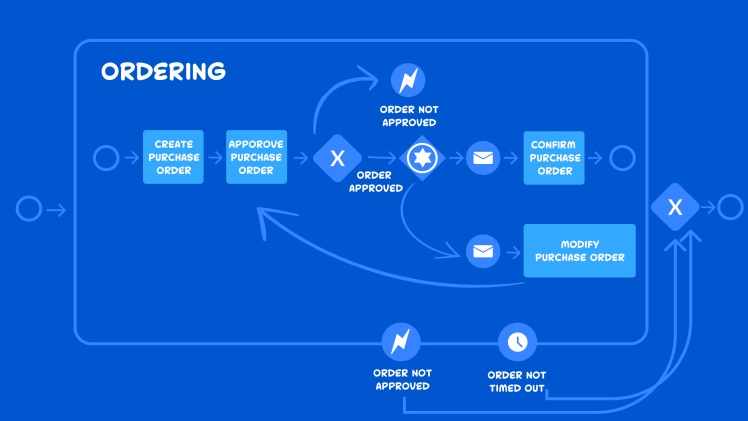What is Business process modeling? (BPM) is a method used to visualize and analyze a company’s processes and procedures. It involves creating detailed diagrams or flowcharts that depict the inputs, outputs, and key activities that make up each process. BPM is used to improve operations and achieve strategic goals by identifying inefficiencies, bottlenecks and areas for improvement.
BPM can also be used to improve communication and collaboration across different departments and teams. By creating a common language and understanding of processes, BPM makes it easier for different groups within a company to work together effectively. This can lead to faster problem-solving, improved decision-making and better coordination of activities.
In addition, BPM can also help organizations to be more agile and adaptable to change. By having clear and detailed models of their processes, companies can quickly respond to changing market conditions or customer needs. They can also use BPM to model and test new processes or business models before implementing them.
Uses:
In this blog post, we will discuss the key steps for using BPM in your organization.
Step 1: Identify the business processes that need improvement. Start by selecting the business processes that are most critical to your organization’s success and that have the greatest potential for improvement. This could include processes related to sales, customer service, or production, for example.
Step 2: Define the process. Once you have selected the business process, it’s time to clearly define the steps involved. This should include the inputs, outputs, and activities involved in the process. You can use a process modeling tool, such as BPMN, to create a visual representation of the process.
Step 3: Analyze the process. Use the process model to identify bottlenecks, redundant tasks, and areas for improvement. This can be done through process simulation or by analyzing process metrics.
Step 4: Implement changes. Once you have identified areas for improvement, it’s time to implement changes to the process. This could include automating certain tasks, eliminating unnecessary steps, or re-organizing the process to improve efficiency.
Step 5: Monitor and improve. Once changes have been implemented, it’s important to monitor the process to ensure that the desired improvements have been achieved. Use process metrics and feedback from employees to identify areas where further improvements can be made.
BPM can also help organizations to comply with regulations and industry standards by clearly documenting processes and procedures. This can help companies to identify and mitigate potential risks before they occur.
Benefits:
One of the key benefits of BPM is that it allows organizations to gain a better understanding of their operations. By creating detailed models of their processes, companies can identify inefficiencies and bottlenecks that are holding them back. They can then use this information to make improvements and optimize their operations.
Another benefit of BPM is that it can help organizations improve communication and collaboration across different departments and teams. By creating a common language and understanding of processes, BPM makes it easier for different groups within a company to work together effectively. This can lead to faster problem-solving and more efficient decision-making.
In addition, BPM can also help organizations to be more agile and adaptable to change. By having clear and detailed models of their processes, companies can quickly respond to changing market conditions or customer needs. They can also use BPM to model and test new processes or business models before implementing them.
Finally, BPM can also help organizations to improve compliance and reduce risk. By clearly documenting processes and procedures, companies can ensure that they are meeting regulatory requirements and industry standards. They can also use BPM to identify and mitigate potential risks before they occur.
Conclusion:
In conclusion, BPM is a powerful tool that can help organizations to improve their operations, communication, and decision-making, while also being more agile and reducing risk. It’s a valuable tool that can help organizations achieve their strategic goals and remain competitive in today’s fast-paced business environment.





